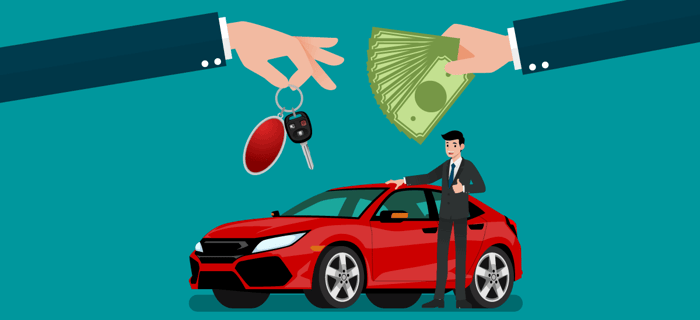Buying a car from a private seller can be a great way to save money compared to dealership prices, but it comes with its own set of challenges. Unlike a dealership, private sales don’t usually offer warranties or return policies, so you need to be extra careful to protect yourself legally and financially. In this detailed guide, we’ll walk you through how to safely purchase a vehicle from another person, including how to transfer money securely and handle the paperwork to ensure everything is above board. Let’s dive in!
Why Buy from a Private Seller?
Purchasing a car from an individual often means a lower price tag since there’s no dealership overhead or profit margin baked in. You might also get a chance to negotiate directly with the owner and learn the car’s history firsthand. However, this DIY approach requires you to take responsibility for vetting the vehicle, transferring funds safely, and completing the legal paperwork. Here’s how to do it right.
Step 1: Research and Inspect the Vehicle
Before you even think about money or paperwork, you need to make sure the car is worth buying. Here’s how to start:
Research the Car’s Value
- Check Market Prices: Use tools like Kelley Blue Book (KBB), Edmunds, or NADA Guides to get a ballpark value based on the car’s make, model, year, mileage, and condition.
- Look Up Reliability: Search online for reviews or forums about the specific model to spot common issues (e.g., transmission problems in older Fords or electrical quirks in certain VWs).
Verify the Vehicle’s History
- Run a VIN Check: Get the Vehicle Identification Number (VIN) from the seller and use a service like Carfax or AutoCheck. This report will reveal accidents, title issues (like salvage or flood damage), and odometer rollbacks.
- Ask for Maintenance Records: A well-maintained car is less likely to surprise you with repairs. Request receipts or logs from the seller.
Inspect the Car
- Test Drive: Drive the car on different roads (highway, city, etc.) to check for odd noises, shaky steering, or braking issues.
- Professional Inspection: Hire a mechanic to give it a once-over. For $100–$200, they can spot hidden problems like a leaky head gasket or worn suspension—issues that could cost thousands later.
If anything feels off—whether it’s the car or the seller’s vibe—don’t hesitate to walk away. There are plenty of fish in the sea (or cars on the market)!
Step 2: Negotiate the Price
- Once you’re confident about the car, it’s time to talk money. Private sellers often expect some haggling, so come prepared:
- Know Your Budget: Factor in taxes, registration fees, and potential repairs—not just the sticker price.
- Point Out Flaws: Use your inspection findings (e.g., worn tires or a cracked windshield) to justify a lower offer.
- Stay Polite: A friendly “What’s the best you can do?” can go a long way.
Agree on a final price before moving to payment and paperwork—verbal agreements can get murky later.
Step 3: Transfer the Money Safely
Handing over cash in a parking lot might feel cinematic, but it’s not the safest way to pay. Here’s how to transfer money securely:
Best Payment Methods
1. Cashier’s Check or Money Order:
- Get one from your bank or post office for the exact amount.
- Pros: It’s secure and guarantees funds for the seller.
- Cons: You’ll need to visit a bank, and there’s a small fee (usually $5–$15).
- Tip: Meet at the seller’s bank to verify the check and complete the sale there.
2. Bank Transfer (Wire or ACH):
- Arrange a direct transfer from your account to the seller’s.
- Pros: No cash to carry, and it’s traceable.
- Cons: Takes 1–2 days to process, and some sellers may not want to share bank details.
- Tip: Confirm the seller’s account info in person to avoid scams.
3. Cash (Only If Necessary):
- Pros: Instant and simple.
- Cons: Risky to carry large amounts, and no paper trail if disputes arise.
- Tip: Meet in a public place (like a bank or police station parking lot) and bring a friend.
Avoid Risky Methods
- Personal Checks: Sellers may not trust them since they can bounce.
- Payment Apps (Venmo, PayPal, etc.): These often lack buyer protection for big transactions like a car sale and may have fees or limits.
- Upfront Deposits: Never pay before seeing the car and signing paperwork—scammers love this trick.
Pro Tip: Split the Transaction
If you’re worried about trust, pay a small deposit (e.g., $100) to hold the car, then settle the rest after paperwork is done. Get a receipt for any partial payment.
Step 4: Handle the Paperwork Properly
The paperwork is where you protect yourself legally. Miss a step, and you could end up with a car you don’t technically own—or worse, one with hidden liens. Here’s what to do:
Essential Documents
1. Title Transfer:
- The seller must sign the title over to you. Check your state’s requirements—some need a notary.
- Verify the VIN on the title matches the car.
- Look for “lien free” or “clear title” status. If there’s a lien (e.g., the seller owes money to a lender), it must be paid off before the sale.
2. Bill of Sale:
- Write up a simple document with:
- Buyer and seller names/addresses
- Car details (make, model, year, VIN, mileage)
- Sale price and date
- Signatures from both parties
- This acts as proof of purchase and can help with taxes or disputes. Many states offer free templates online.
3. Odometer Disclosure Statement:
Federal law requires this for cars under 10 years old. The seller states the mileage is accurate (or notes if it’s not). Some states include this on the title.
4. Smog/Emissions Certificate (If Required):
In states like California, the seller must provide a recent smog test certificate (usually within 90 days of sale).
5. Release of Liability (Optional but Smart):
The seller files this with the DMV to prove they’re no longer responsible for the car. Ask them to do it and get a copy.
Check for Local Rules
Every state has slightly different requirements. Visit your DMV website or call ahead to confirm what’s needed. For example:
- California: Requires a smog certificate and title transfer within 10 days.
- Texas: Needs a title application and proof of insurance.
- New York: Requires a bill of sale and title transfer within 30 days.
Step 5: Finalize the Sale
With money and paperwork ready, it’s time to seal the deal:
- Meet in a Safe Location: Choose a public spot like a bank, DMV parking lot, or police station.
- Exchange Everything: Hand over payment, get the signed title, bill of sale, keys, and any other documents.
- Take Photos: Snap pics of the car, paperwork, and seller for your records.
- Get Insurance: You’ll need coverage before driving off—call your insurer ahead of time to add the car.
Step 6: Register the Vehicle
After the sale, you’re not done yet—you need to register the car in your name:
- Visit the DMV: Bring the title, bill of sale, smog certificate (if needed), and proof of insurance.
- Pay Fees: Expect to pay sales tax (based on the purchase price) and registration fees. These vary by state—e.g., $50–$200 in most places, plus tax.
- Get Plates: Some states issue new plates; others let you keep the seller’s (check local rules).
Do this ASAP—most states give you 10–30 days to register before penalties kick in.
Protecting Yourself from Scams
Private sales can attract shady characters. Watch out for:
- Title Washing: A car with a salvage title “cleaned” to look legit. Always run a VIN check.
- Curbstoning: Unlicensed dealers posing as private sellers. If they’ve got multiple cars for sale, be wary.
- Fake Payment Requests: Never send money before seeing the car or meeting the seller.
If something feels off (e.g., they dodge questions or rush you), trust your gut and walk away.
Final Thoughts: Drive Away with Confidence
Buying a car from a private seller can be a rewarding experience if you take the right steps. Research the vehicle, pay securely, and nail the paperwork to protect yourself legally and financially. It’s all about doing your homework and staying cautious—then you can hit the road with peace of mind.




